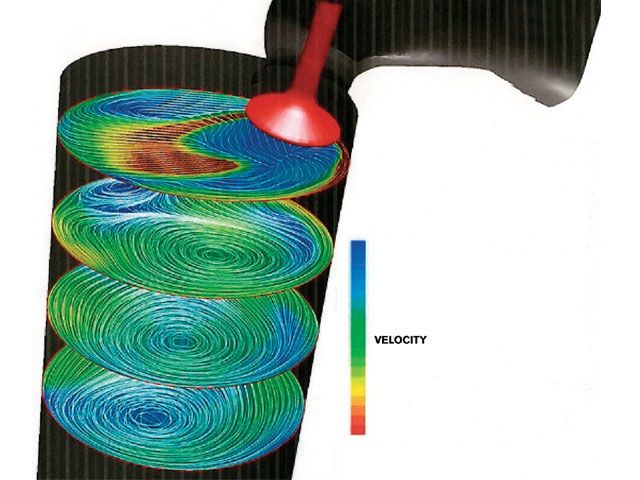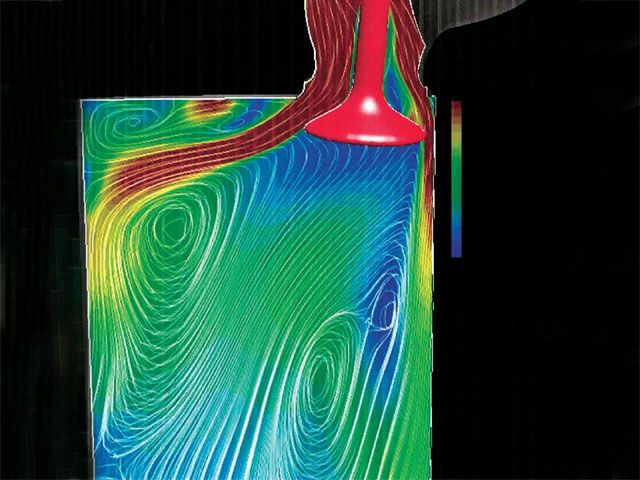Is there any information on the importance of the ridge that runs between the intake and exhaust valves???
On one hand the higher this ridge the more it restricts flow, but on the other hand it would stop some of the intake flow from going straight across and out the exhaust during overlap. Maybe there is some level of overlap where it starts to make sense to keep some height above the valves to stop overlap losses.?
On one hand the higher this ridge the more it restricts flow, but on the other hand it would stop some of the intake flow from going straight across and out the exhaust during overlap. Maybe there is some level of overlap where it starts to make sense to keep some height above the valves to stop overlap losses.?




